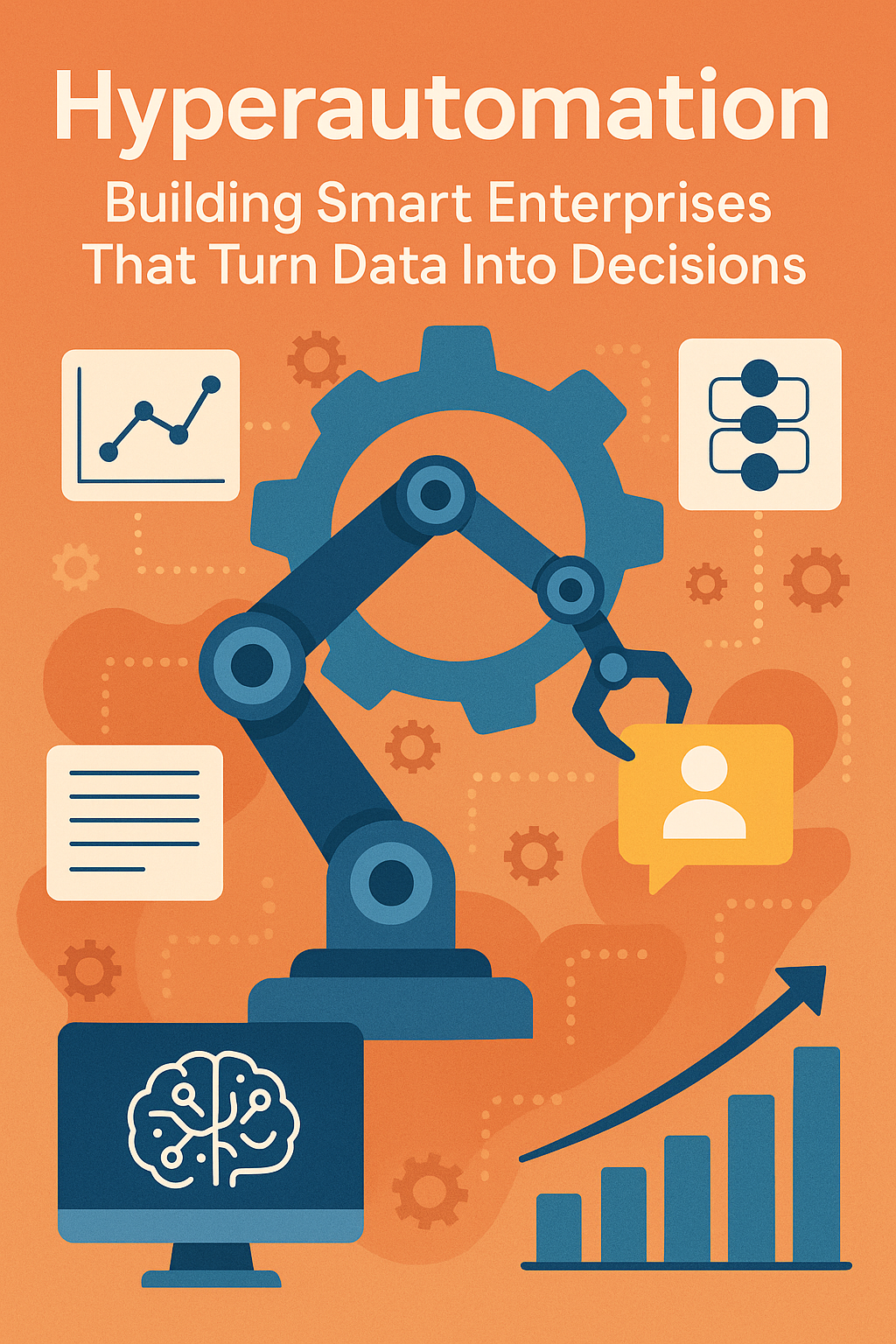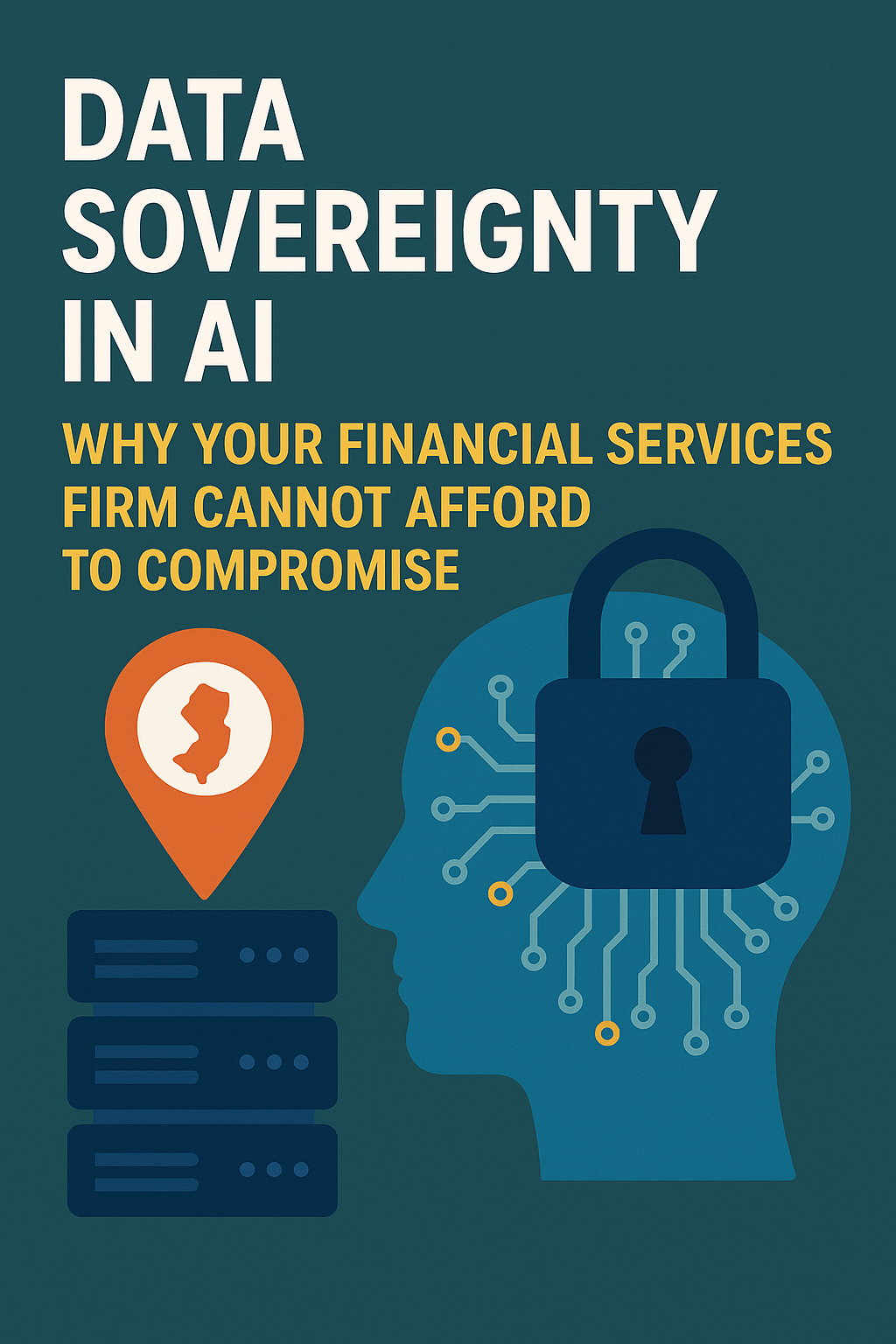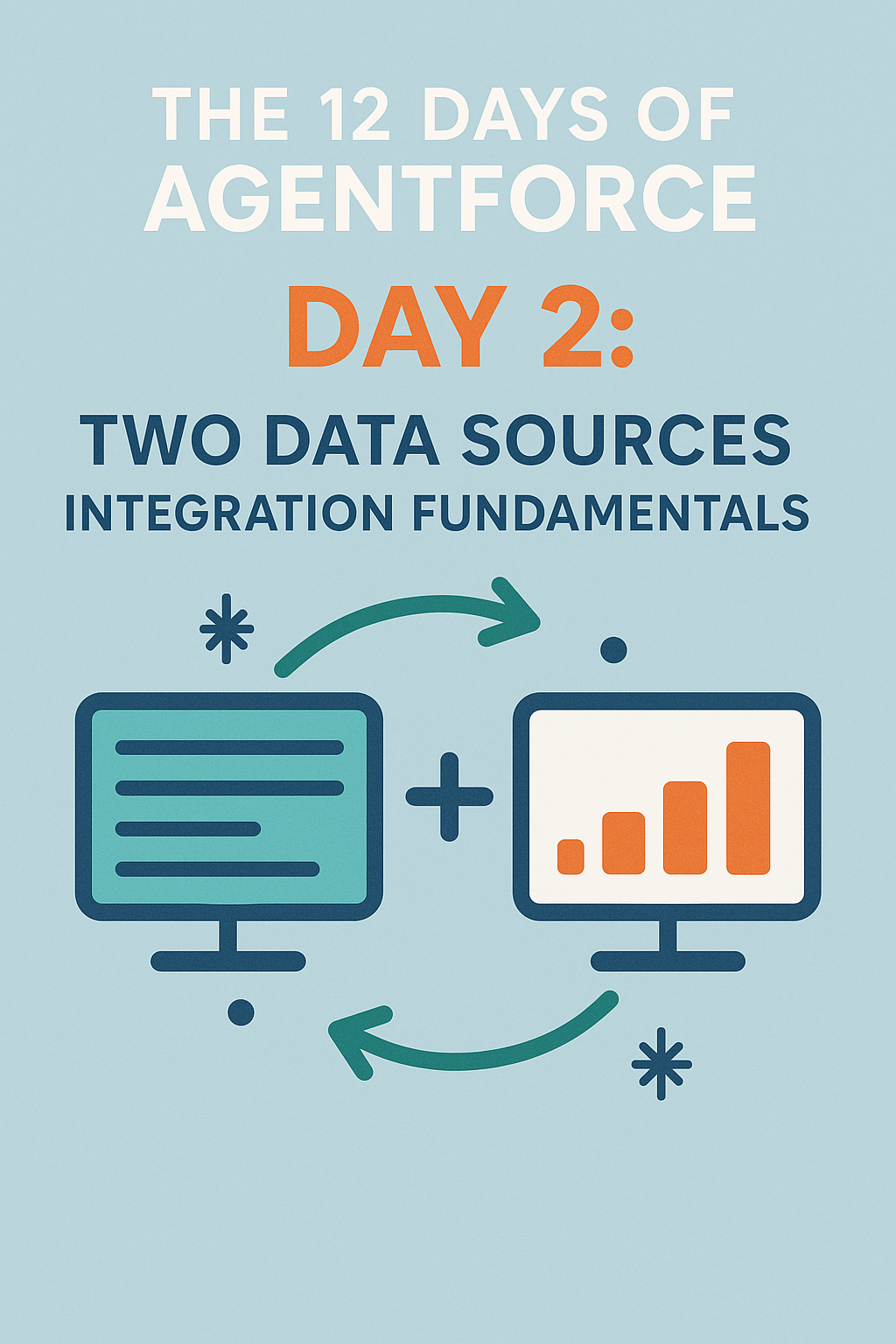
Hyperautomation: Building Smart Enterprises That Turn Data Into Decisions
Your CRM implementation has been running for years. It houses valuable customer data, tracks sales activities, and supports your team's daily operations. But as your firm grows and client expectations evolve, you're noticing gaps: manual processes that don't scale, missed opportunities, inconsistent follow-up, and difficulty measuring marketing's true impact on revenue.
Transformation is one of the most overused words in business. Every vendor promises transformation. Every consultant claims to deliver it. Every technology platform positions itself as transformative. Yet genuine transformation—fundamental change in how an organization operates, competes, and delivers value—remains elusive for many wealth management firms.
In today's rapidly evolving business landscape, the ability to transform raw data into actionable insights isn't just an advantage—it's a necessity for survival. Enter hyperautomation, the next frontier in digital transformation that's revolutionizing how organizations operate, compete, and innovate.
While traditional automation focused on streamlining individual tasks, hyperautomation represents a paradigm shift: the orchestrated use of multiple technologies—including artificial intelligence (AI), machine learning (ML), robotic process automation (RPA), and advanced analytics—to create intelligent, self-optimizing business ecosystems. According to recent industry research, 67% of businesses now use business process automation solutions, and this number is accelerating rapidly as organizations recognize the transformative potential of hyperautomation.
What is hyperautomation? Hyperautomation is the strategic application of advanced technologies to automate processes, generate insights, and enable autonomous decision-making across an entire organization. Unlike traditional automation that handles repetitive tasks, hyperautomation creates "smart enterprises" where data flows seamlessly across departments, systems learn and adapt, and decisions are made with unprecedented speed and accuracy.
The stakes are high: companies that successfully implement hyperautomation are seeing dramatic results. Tesla's Gigafactories, for example, reduced production costs by 30% and increased efficiency by 40% through hyperautomation strategies. As we move through 2025, the question isn't whether to adopt hyperautomation, but how quickly you can implement it to stay competitive.
Understanding Hyperautomation: More Than Just Automation
The Core Components of Hyperautomation
Hyperautomation isn't a single technology—it's an integrated ecosystem of complementary tools working in concert:
1. Robotic Process Automation (RPA)
RPA serves as the foundation, handling repetitive, rule-based tasks that consume valuable human time. Modern RPA bots can process invoices, update records, transfer data between systems, and execute routine workflows with 99.9% accuracy.
2. Artificial Intelligence and Machine Learning
AI and ML add intelligence to automation, enabling systems to learn from patterns, make predictions, and adapt to changing conditions. These technologies power everything from predictive maintenance to customer behavior analysis.
3. Process Mining and Discovery
Process mining tools analyze existing workflows to identify bottlenecks, inefficiencies, and automation opportunities. This data-driven approach ensures you're automating the right processes in the right way.
4. Advanced Analytics and Business Intelligence
Real-time analytics transform raw data into actionable insights, providing decision-makers with the information they need exactly when they need it.
5. Integration Platforms
API-based integration platforms connect disparate systems, ensuring data flows seamlessly across your technology stack without manual intervention.
How Hyperautomation Differs from Traditional Automation
| Traditional Automation | Hyperautomation |
|---|---|
| Focuses on individual tasks | Orchestrates end-to-end processes |
| Rule-based and static | Adaptive and intelligent |
| Requires manual oversight | Enables autonomous decision-making |
| Siloed implementations | Enterprise-wide integration |
| Reactive problem-solving | Predictive and proactive |
The key distinction is intelligence and integration. Traditional automation follows predetermined rules; hyperautomation learns, adapts, and optimizes continuously.
The Business Case: Why Hyperautomation Matters Now
Quantifiable Benefits Driving Adoption
Organizations implementing hyperautomation are experiencing transformative results across multiple dimensions:
Operational Efficiency
- 30-50% reduction in process completion time: Automated workflows eliminate delays and bottlenecks
- 40-60% decrease in operational costs: Reduced manual labor and error correction expenses
- 99%+ accuracy rates: Elimination of human error in data processing and routine tasks
Strategic Advantages
- Real-time decision-making: Access to instant insights enables faster, more informed choices
- Enhanced customer experience: Faster response times and personalized interactions
- Scalability without proportional cost increases: Handle growing volumes without adding headcount
- Competitive differentiation: Ability to innovate and adapt faster than competitors
Financial Impact
According to industry analysis, businesses using hyperautomation report:
- 67% improvement in end-to-end visibility across systems
- 35% increase in employee productivity (employees focus on high-value work)
- 25-40% faster time-to-market for new products and services
Industries Leading the Hyperautomation Revolution
Manufacturing
Smart factories use hyperautomation for predictive maintenance, quality control, supply chain optimization, and production scheduling. Sensors and IoT devices feed real-time data to AI systems that automatically adjust operations to maximize efficiency.
Financial Services
Banks and insurance companies leverage hyperautomation for fraud detection, risk assessment, loan processing, and regulatory compliance. AI-powered systems can analyze thousands of transactions per second, identifying anomalies that would take humans weeks to detect.
Healthcare
Hospitals and healthcare systems use hyperautomation for patient scheduling, claims processing, diagnostic support, and treatment planning. This reduces administrative burden on medical staff while improving patient outcomes.
Retail and E-commerce
Retailers implement hyperautomation for inventory management, dynamic pricing, personalized marketing, and customer service. Amazon's recommendation engine, powered by hyperautomation, drives 35% of total sales.
Technology and IT Services
Tech companies use hyperautomation for software development, testing, deployment, and infrastructure management. DevOps teams can deploy code changes hundreds of times per day with automated testing and rollback capabilities.
Building Your Smart Enterprise: A Strategic Framework
Phase 1: Assessment and Discovery
Identify Automation Opportunities
Begin with process mining to understand your current workflows. Look for processes that are:
- High-volume and repetitive
- Rule-based with clear decision criteria
- Time-sensitive and requiring quick turnaround
- Prone to human error
- Data-intensive with multiple system interactions
Evaluate Current Technology Stack
Assess your existing infrastructure's readiness for hyperautomation. Key considerations include:
- API availability and integration capabilities
- Data quality and accessibility
- Cloud vs. on-premises architecture
- Security and compliance requirements
- Scalability limitations
Calculate Potential ROI
Quantify the expected benefits by analyzing:
- Current process costs (labor, time, error correction)
- Expected efficiency gains
- Implementation and maintenance costs
- Time to value (how quickly you'll see returns)
Phase 2: Strategic Planning and Prioritization
Start with Quick Wins
Identify 2-3 high-impact, low-complexity processes to automate first. Early successes build momentum and demonstrate value to stakeholders. Examples include:
- Invoice processing and accounts payable
- Employee onboarding and HR administration
- Customer inquiry routing and response
- Report generation and distribution
Develop a Phased Roadmap
Create a multi-year plan that progresses from simple automation to full hyperautomation:
- Months 1-6: Implement RPA for repetitive tasks
- Months 7-12: Add AI/ML for intelligent decision support
- Year 2: Integrate systems for end-to-end process automation
- Year 3+: Enable autonomous operations and continuous optimization
Secure Executive Sponsorship
Hyperautomation requires cross-functional collaboration and significant investment. Ensure C-suite buy-in by demonstrating:
- Clear business value and ROI projections
- Competitive necessity (what happens if you don't act)
- Risk mitigation strategies
- Change management plans
Phase 3: Implementation and Integration
Choose the Right Technology Partners
Select platforms and vendors based on:
- Scalability: Can the solution grow with your needs?
- Integration capabilities: Does it work with your existing systems?
- Ease of use: Can business users (not just IT) leverage it?
- Support and ecosystem: Is there a strong community and vendor support?
- Total cost of ownership: Consider licensing, implementation, and maintenance costs
Build Cross-Functional Teams
Successful hyperautomation requires collaboration between:
- Business process owners: Define requirements and success criteria
- IT and data teams: Ensure technical feasibility and integration
- Data scientists: Develop and train AI/ML models
- Change management specialists: Drive adoption and manage resistance
Implement Governance and Oversight
Establish clear policies for:
- Data privacy and security
- AI ethics and bias prevention
- Process ownership and accountability
- Performance monitoring and optimization
- Compliance with industry regulations
Phase 4: Optimization and Scaling
Monitor Performance Continuously
Track key metrics to ensure your hyperautomation initiatives deliver expected value:
- Process completion time
- Error rates and quality metrics
- Cost per transaction
- Employee satisfaction and productivity
- Customer satisfaction scores
Enable Continuous Learning
Hyperautomation systems should improve over time through:
- Machine learning model retraining with new data
- Process refinement based on performance analytics
- User feedback integration
- A/B testing of different automation approaches
Scale Across the Enterprise
Once initial implementations prove successful:
- Replicate proven automation patterns to similar processes
- Expand to more complex, cross-functional workflows
- Integrate additional data sources for richer insights
- Enable autonomous decision-making for routine choices
Real-World Success Stories: Hyperautomation in Action
Tesla: Manufacturing Excellence Through Hyperautomation
Tesla's Gigafactories represent the pinnacle of hyperautomation in manufacturing. The company uses:
- Robotics and IoT sensors for real-time production monitoring
- AI-powered predictive maintenance to prevent equipment failures before they occur
- Automated quality control using computer vision to detect defects
- Dynamic production scheduling that optimizes output based on demand forecasts
Results: 30% reduction in production costs, 40% increase in operational efficiency, and the ability to scale production rapidly without proportional increases in workforce.
Netflix: Personalization at Scale
Netflix's recommendation engine is a masterclass in hyperautomation for customer experience:
- Machine learning algorithms analyze viewing patterns across 230+ million subscribers
- Automated content tagging categorizes thousands of titles across hundreds of attributes
- Dynamic thumbnail generation creates personalized artwork for each user
- Predictive analytics inform content acquisition and production decisions
Results: 80% of content watched comes from recommendations, driving 34% higher customer retention and billions in annual revenue.
JPMorgan Chase: Financial Services Transformation
The banking giant implemented hyperautomation across multiple functions:
- Contract Intelligence (COiN) uses AI to review 12,000 commercial credit agreements annually—work that previously required 360,000 hours of lawyer time
- Fraud detection systems analyze millions of transactions in real-time, identifying suspicious patterns with 95% accuracy
- Automated customer service handles routine inquiries, freeing human agents for complex issues
Results: $150 million in annual savings, 99% reduction in document review time, and significantly improved fraud prevention.
Siemens: Supply Chain Optimization
Siemens implemented hyperautomation to manage its complex global supply chain:
- Predictive analytics forecast demand and optimize inventory levels
- Automated procurement systems negotiate with suppliers and place orders
- Real-time tracking provides visibility across the entire supply chain
- AI-powered logistics optimize shipping routes and methods
Results: 25% reduction in inventory costs, 30% improvement in on-time delivery, and enhanced ability to respond to supply chain disruptions.
Overcoming Common Challenges and Pitfalls
Challenge 1: Data Quality and Accessibility
The Problem: Hyperautomation is only as good as the data it processes. Many organizations struggle with siloed, inconsistent, or incomplete data.
The Solution:
- Implement data governance frameworks before automation
- Invest in data cleansing and standardization
- Create a unified data architecture (data lakes or warehouses)
- Establish clear data ownership and accountability
Challenge 2: Change Management and Employee Resistance
The Problem: Employees may fear job loss or resist new ways of working.
The Solution:
- Communicate the vision: automation augments, not replaces, human workers
- Involve employees in automation design and implementation
- Provide comprehensive training and upskilling programs
- Celebrate early wins and share success stories
- Redeploy freed-up capacity to higher-value work
Challenge 3: Integration Complexity
The Problem: Legacy systems may lack APIs or integration capabilities.
The Solution:
- Use integration platforms (iPaaS) to bridge systems
- Consider gradual modernization of legacy applications
- Implement API-first architecture for new systems
- Use RPA as a temporary bridge where direct integration isn't feasible
Challenge 4: Security and Compliance Risks
The Problem: Automated systems can amplify security vulnerabilities and compliance violations.
The Solution:
- Build security into automation from the start (security by design)
- Implement robust access controls and audit trails
- Regularly test automated processes for compliance
- Maintain human oversight for high-risk decisions
- Stay current with evolving regulations (GDPR, CCPA, industry-specific rules)
Challenge 5: Unrealistic Expectations and Scope Creep
The Problem: Organizations expect immediate, transformative results or try to automate everything at once.
The Solution:
- Set realistic timelines (6-12 months for meaningful results)
- Start small with pilot projects
- Define clear success criteria before implementation
- Resist the temptation to automate processes that should be redesigned
- Focus on business outcomes, not technology for its own sake
The Future of Hyperautomation: Trends to Watch
Agentic AI: The Next Evolution
Agentic AI represents the cutting edge of hyperautomation—AI systems that can autonomously plan, decide, and act to achieve goals. By 2028, Gartner predicts that 15% of daily workplace decisions will be made autonomously by agentic AI systems, up from 0% in 2024.
Examples include:
- AI agents that automatically optimize IT network performance
- Financial systems that adjust investment strategies based on market conditions
- Supply chain agents that reroute shipments in response to disruptions
- Customer service agents that resolve complex issues without human intervention
Hybrid Computing Architectures
The future of hyperautomation will leverage hybrid computing—integrating cloud, edge, quantum, and neuromorphic computing to handle increasingly complex workloads. This enables:
- Real-time processing at the edge for IoT and autonomous systems
- Massive-scale data analysis in the cloud
- Quantum computing for optimization problems
- Energy-efficient neuromorphic chips for AI inference
Sustainable Hyperautomation
As environmental concerns grow, organizations are focusing on energy-efficient computing and sustainable automation practices:
- Optimizing algorithms to reduce computational requirements
- Using renewable energy for data centers
- Implementing automation to reduce waste and resource consumption
- Measuring and reporting the carbon footprint of digital operations
Democratization of Automation
Low-code/no-code platforms are making hyperautomation accessible to business users without technical expertise. This democratization enables:
- Faster implementation of automation solutions
- Reduced dependence on IT departments
- Greater innovation from frontline employees
- More agile response to changing business needs
Getting Started: Your Hyperautomation Action Plan
Immediate Actions (Next 30 Days)
- Conduct a process audit: Identify your top 10 most time-consuming, repetitive processes
- Assess your data readiness: Evaluate data quality, accessibility, and governance
- Benchmark competitors: Research how peers in your industry are using hyperautomation
- Build your business case: Calculate potential ROI for 2-3 pilot projects
- Secure executive sponsorship: Present findings and recommendations to leadership
Short-Term Goals (3-6 Months)
- Launch pilot projects: Implement automation for 1-2 high-impact processes
- Build your team: Hire or train staff in RPA, AI/ML, and process optimization
- Select technology partners: Choose platforms that align with your strategy
- Establish governance: Create policies for data, security, and AI ethics
- Measure and communicate results: Track KPIs and share wins across the organization
Long-Term Vision (1-3 Years)
- Scale successful pilots: Expand automation to additional processes and departments
- Integrate systems: Create seamless data flows across your technology stack
- Enable autonomous operations: Implement AI-powered decision-making for routine choices
- Build a culture of continuous improvement: Encourage innovation and experimentation
- Become a smart enterprise: Achieve end-to-end visibility and data-driven operations
Frequently Asked Questions
What is the difference between automation and hyperautomation?
Traditional automation focuses on automating individual tasks using rule-based systems. Hyperautomation takes a holistic approach, combining multiple technologies (RPA, AI, ML, analytics) to automate end-to-end processes, enable intelligent decision-making, and create self-optimizing systems. Think of automation as replacing a single worker with a robot, while hyperautomation is like building an intelligent factory where systems work together seamlessly.
How much does hyperautomation cost to implement?
Costs vary widely based on scope, complexity, and existing infrastructure. Small pilot projects might cost $50,000-$200,000, while enterprise-wide implementations can range from $1-10+ million. However, ROI is typically achieved within 12-24 months through cost savings and efficiency gains. Many organizations see 3-5x return on investment within three years.
Will hyperautomation eliminate jobs?
Hyperautomation typically transforms jobs rather than eliminating them. While routine, repetitive tasks are automated, human workers are redeployed to higher-value activities requiring creativity, judgment, and emotional intelligence. Studies show that companies implementing AI and automation often increase hiring for roles focused on strategy, innovation, and customer relationships. The key is proactive reskilling and change management.
What skills do employees need for a hyperautomated workplace?
Critical skills include:
- Data literacy: Understanding how to interpret and use data
- Digital fluency: Comfort with technology and willingness to learn new tools
- Critical thinking: Ability to solve complex, non-routine problems
- Creativity and innovation: Generating new ideas and approaches
- Emotional intelligence: Collaboration, communication, and empathy
- Adaptability: Embracing change and continuous learning
How do I measure the success of hyperautomation initiatives?
Key performance indicators (KPIs) include:
- Efficiency metrics: Process completion time, throughput, cost per transaction
- Quality metrics: Error rates, accuracy, customer satisfaction
- Financial metrics: ROI, cost savings, revenue impact
- Employee metrics: Productivity, satisfaction, time spent on high-value work
- Strategic metrics: Time-to-market, innovation rate, competitive position
Is hyperautomation only for large enterprises?
No. While large enterprises have more resources, hyperautomation is increasingly accessible to small and mid-sized businesses through:
- Cloud-based platforms with subscription pricing
- Low-code/no-code tools requiring minimal technical expertise
- Managed services and automation-as-a-service offerings
- Scalable solutions that grow with your business
Small businesses can start with focused pilot projects and scale gradually as they see results.
How long does it take to see results from hyperautomation?
Timelines vary by complexity:
- Quick wins: 1-3 months for simple RPA implementations
- Meaningful impact: 6-12 months for integrated automation solutions
- Transformational results: 18-36 months for enterprise-wide hyperautomation
The key is starting with high-impact, low-complexity projects to build momentum and demonstrate value quickly.
What are the biggest risks of hyperautomation?
Primary risks include:
- Data security and privacy breaches: Automated systems can amplify vulnerabilities
- Compliance violations: Automated processes may inadvertently violate regulations
- Over-reliance on technology: Loss of human judgment and oversight
- Implementation failures: Poor planning or execution leading to wasted investment
- Employee resistance: Change management challenges derailing adoption
These risks can be mitigated through proper governance, security measures, change management, and maintaining appropriate human oversight.
Conclusion: The Imperative of Becoming a Smart Enterprise
Hyperautomation isn't just another technology trend—it's a fundamental shift in how businesses operate, compete, and create value. As we progress through 2025 and beyond, the gap between organizations that embrace hyperautomation and those that don't will widen dramatically.
The smart enterprise of tomorrow is characterized by:
- Seamless data flow across all systems and departments
- Real-time insights driving faster, better decisions
- Autonomous operations handling routine tasks and choices
- Human workers focused on strategy, innovation, and relationships
- Continuous learning and optimization built into every process
The question isn't whether to pursue hyperautomation, but how quickly you can implement it effectively. Organizations that act now will gain significant competitive advantages: lower costs, faster operations, better customer experiences, and the agility to adapt to whatever changes the future brings.
Start your hyperautomation journey today. Begin with a single pilot project, learn from the experience, and scale gradually. The path to becoming a smart enterprise is a marathon, not a sprint—but every journey begins with a single step.
The future belongs to organizations that can turn data into decisions, insights into action, and automation into intelligence. Will your enterprise be among them?
About the Author
David Cockrum founded Vantage Point after serving as Chief Operating Officer in the financial services industry. His unique blend of operational leadership and technology expertise has enabled Vantage Point's distinctive business-process-first implementation methodology, delivering successful transformations for 150+ financial services firms across 400+ engagements with a 4.71/5.0 client satisfaction rating and 95%+ client retention rate.
-
-
- Email: david@vantagepoint.io
- Phone: (469) 652-7923
- Website: vantagepoint.io
-



